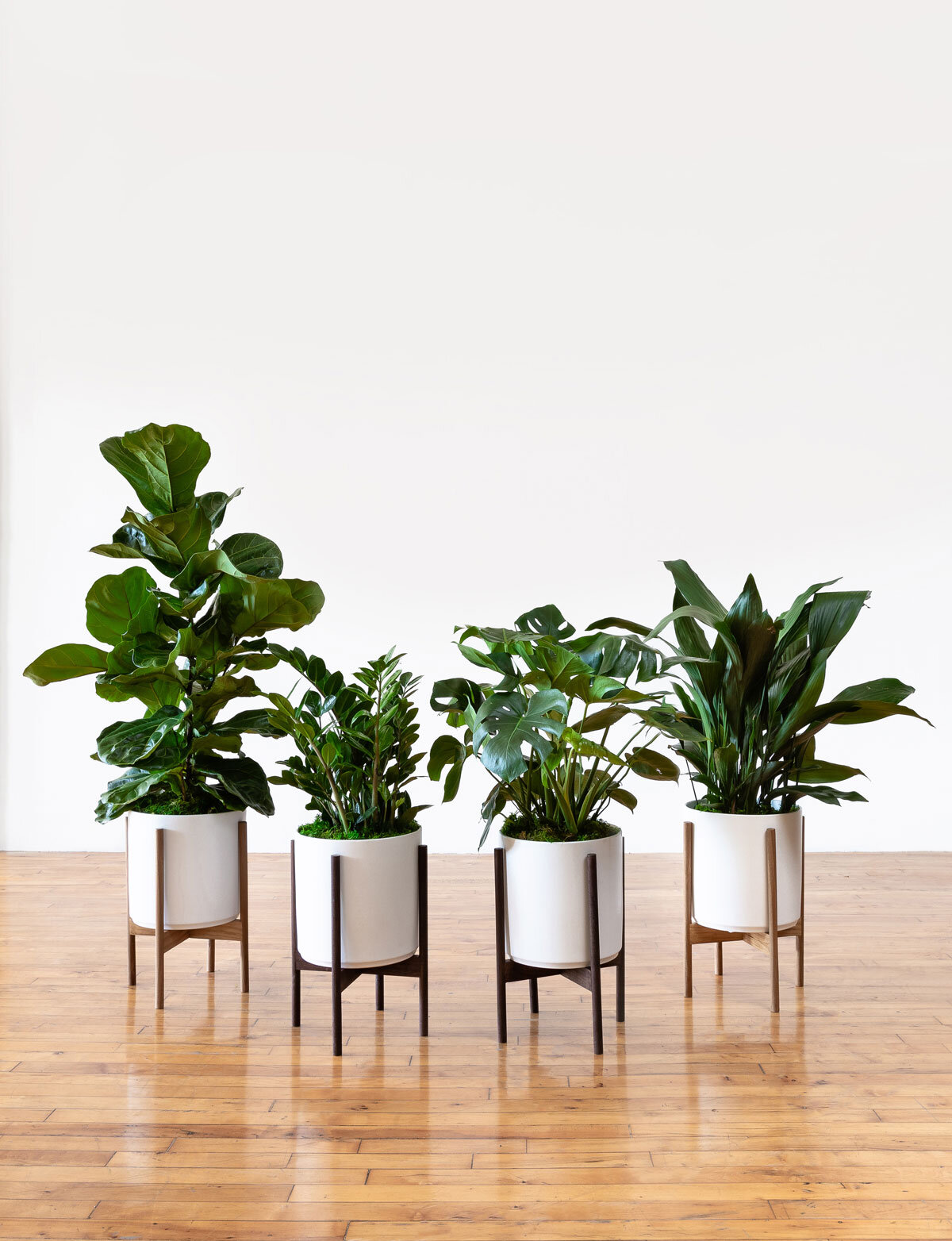Are your plants cold? Most indoor plant varieties originate from warm tropical environments—think of a balmy stroll through a lush Hawaiian jungle. Though plants can be very adaptable, conditions inside our homes are much different than these natural habitats, especially during winter. Our homes can be colder, or drier (thanks to heaters) and of course, darker. Always remember that as a general rule, less light & warmth = less water.
As you strive to find the perfect balance for your plants during the colder months of the year, here are a few normal reactions you may see from your green roommates.
Sudden Leaf Drop
This is your plant's way of disposing of old leaves to save energy for new ones. This happens naturally throughout the year, but if you're noticing this all of a sudden during winter, it may be that your plant is reacting to the change in temperature and stocking up on energy. To slow down the process, keep the room above 65ºF and move it away from cold windows which can cause cell damage on delicate foliage.
Wilting or curling leaves
Wilting or curling leaves might also be a sign your plant is cold. Healthy leaves usually have a relative firmness to them, which the plant may lose if it’s too cold.
Yellowing Leaves
Another way your plant tells you that it's done with a leaf, but also accelerated with changing temperatures. Cold temperatures can disrupt the water absorption process in plants, leading to wilting even when the soil is adequately moist. Help your plant by trimming these off and keeping its space warm and humid.
Growth on Pause
If you haven't seen any new growth lately, it's likely that your plant has sensed the cold and counted less hours of sunlight. These signals tell your plant that it's time to rest, and in some cases, even go dormant. Let your plant enjoy its quiet period of slow growth, water only when the soil is dry, and wait for spring to start fertilizing again!
Living Room Ready Floor Plants
California-grown, hand-selected for quality, shape and style. Order online at leonandgeorge.com











